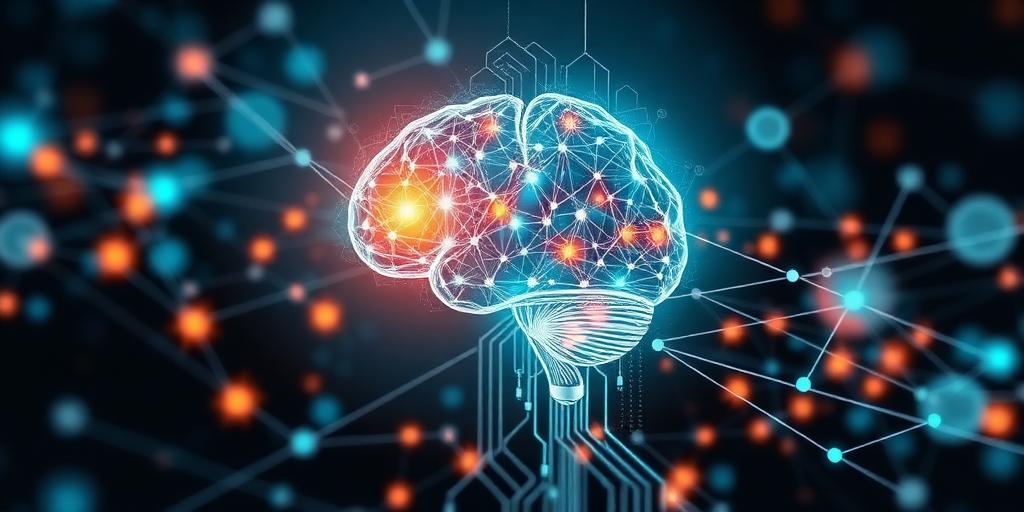The digital landscape is undergoing a profound transformation, driven by the convergence of two monumental technological forces: Artificial Intelligence (AI) and the Internet of Things (IoT). Separately, these technologies have reshaped industries and daily life. However, their true revolutionary potential is unleashed when they operate in concert, forming a synergistic paradigm often referred to as AIoT. This integration is not merely an incremental improvement; it represents a fundamental shift in how data is collected, processed, and acted upon, leading to unprecedented levels of automation, efficiency, and insight.
Understanding the Core Components
Before delving into their powerful combination, it is crucial to briefly define AI and IoT. Artificial Intelligence encompasses systems designed to perform tasks that typically require human intelligence, such as learning, problem-solving, decision-making, and pattern recognition. Its strength lies in processing vast datasets to identify trends, make predictions, and automate complex cognitive functions. The Internet of Things, conversely, refers to the network of physical objects embedded with sensors, software, and other technologies for the purpose of connecting and exchanging data with other devices and systems over the internet. IoT's primary contribution is the generation of real-world data from the physical environment.
The Synergy: AI Enhancing IoT
The "powerful combination" of AI and IoT is rooted in their complementary strengths. IoT devices, deployed across various environments—from smart factories to wearable health monitors—generate an unprecedented volume of raw data. Without AI, this data often remains an undifferentiated stream, difficult to interpret or leverage effectively. This is where AI assumes a pivotal role.
AI algorithms can:
- Analyze Vast Datasets: Process and derive meaningful insights from the immense streams of data generated by IoT sensors. This includes identifying anomalies, predicting failures, and optimizing operations.
- Enable Predictive Maintenance: By analyzing sensor data from machinery, AI can predict when equipment is likely to fail, enabling proactive maintenance that minimizes downtime and extends asset lifespan. This is a critical application in industrial IoT.
- Facilitate Intelligent Decision-Making: AI empowers IoT devices to make autonomous, context-aware decisions at the edge, reducing latency and reliance on centralized cloud processing. This capability is vital for applications like autonomous vehicles and real-time smart city management.
- Enhance Personalization: In consumer IoT, AI can personalize experiences based on user behavior patterns detected through connected devices, from smart home climate control to tailored fitness recommendations.
IoT: The Data Engine for AI
Conversely, IoT acts as the indispensable data engine that fuels AI's learning and inference capabilities. AI models require extensive, high-quality data to be trained effectively and to generate accurate predictions. IoT provides this data from diverse, real-world sources, ensuring that AI systems are grounded in practical reality rather than theoretical constructs.
- Real-time Environmental Context: IoT sensors provide continuous streams of environmental data (temperature, pressure, movement, light, sound), offering AI systems a dynamic understanding of their operational context.
- Behavioral Data: From smart home devices tracking usage patterns to industrial sensors monitoring machine performance, IoT collects invaluable behavioral data that allows AI to learn and adapt.
- Edge Computing Capabilities: The proliferation of IoT devices with embedded processing capabilities facilitates edge AI, where data is processed closer to its source, reducing bandwidth requirements and improving response times.
Transformative Applications of AIoT
The integration of AI and IoT is driving innovation across numerous sectors:
- Smart Cities: AIoT optimizes traffic flow, manages waste, monitors air quality, and enhances public safety through interconnected sensors and intelligent analytical systems.
- Industrial IoT (IIoT): Predictive maintenance, quality control, supply chain optimization, and automated manufacturing processes are revolutionized by AIoT, leading to significant operational efficiencies.
- Healthcare: Wearable devices combined with AI enable continuous health monitoring, early disease detection, personalized treatment plans, and remote patient care.
- Agriculture: Smart farming solutions use AIoT to monitor crop health, optimize irrigation, and manage livestock, leading to increased yields and resource efficiency.
- Autonomous Systems: From self-driving cars to drones, AI leverages real-time sensor data from IoT to perceive environments, make navigation decisions, and operate autonomously.
Challenges and Considerations
While the promise of AIoT is immense, its widespread adoption faces several challenges. Data security and privacy concerns are paramount, given the sheer volume and sensitive nature of data collected by IoT devices. Ensuring the interoperability of diverse devices and platforms, managing the scalability of these complex systems, and addressing the ethical implications of autonomous AI-driven decisions are critical hurdles that require robust solutions.
The Future of Connected Intelligence
The convergence of AI and IoT is poised to redefine our relationship with technology and the physical world. It promises a future where environments are more responsive, systems are more intelligent, and processes are more autonomous. As these technologies mature and integration becomes seamless, the AIoT ecosystem will continue to expand, ushering in an era of truly connected intelligence that promises profound societal and economic impact. Businesses and governments that strategically invest in and navigate the complexities of AIoT will be at the forefront of this technological evolution.




